What Is Gyutan?
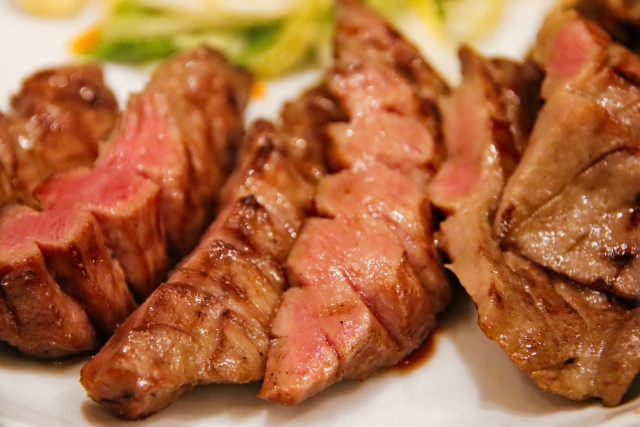
Gyutan, or beef tongue, refers to a cut from the cow’s tongue.
In Japan, beef tongue is popular in a variety of dishes, such as yakiniku (Korean-style BBQ), sumibi-yaki (char-grilling), and shabu-shabu (hot pot with thinly sliced meat).
The meat is characterized by its moderate fat content and unique texture with a juicy, flavorful taste.
It has also received attention as a healthy food due to its high protein content and nutritional value.
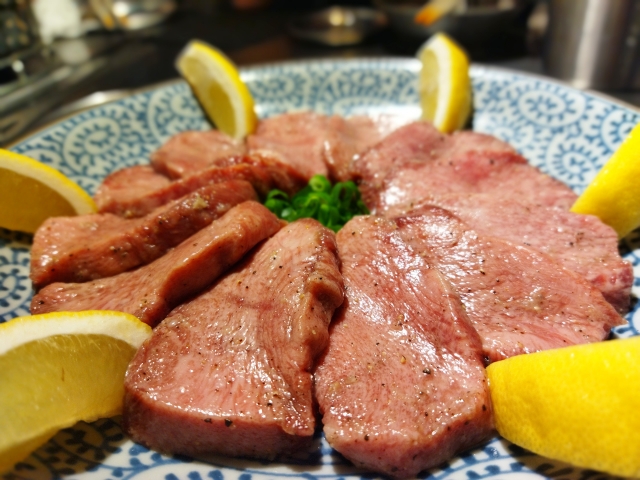
Preparation is important for cooking beef tongue well.
The meat becomes tender by removing the tough skin on surface.
The standard cooking methods include “shio-tan,” grilled simply with salt, and “miso-tan,” grilled with a miso-based sauce.
In Japan, beef tongue is often cooked by slicing and grilling but it is also used as an ingredient in stews and soups.
Sendai City in Miyagi is known as the "city of gyutan," the region is particularly famous for its beef tongue cuisine.
Beef tongue is considered to have been widely consumed in Japan post-World War II.
With the end of the war, Japan faced severe food shortages throughout the country.
During this period, U.S. troops were stationed in Japan, and the Japanese began to take advantage of the beef tongue that the troops left uneaten.
The beef cut was not a very common ingredient then and was inexpensive.
Later, it became widespread in Sendai City as restaurants specializing in beef tongue began to open.
Gyutan is now becoming a luxury foodstuff in Japan.
Only 1 to 2 kg of the cut obtained from each cow, causing the cost to rise.
Kinds of Gyutan
The following explores some of the most gyutan dishes in Japan.
Sendai Gyutan-Yaki (Sendai-Style Grilled Beef Tongue)
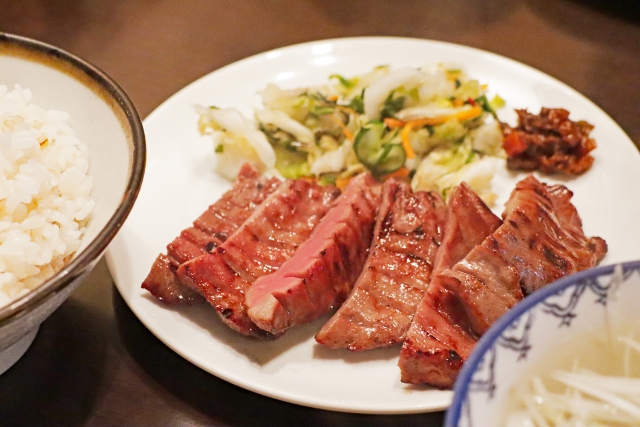
This is a specialty of Sendai City in Miyagi.
The most distinctive characteristics of the dish are its thickness and the rich flavor resulting from the slow grilling process.
The grilled beef tongue is slightly crispy on the outside and extremely juicy and tender on the inside, providing a unique texture.
The dish is usually served with lemon juice or salt for seasoning, while some restaurants offer an original sauce or miso paste.
Yakiniku (Korean-style BBQ)
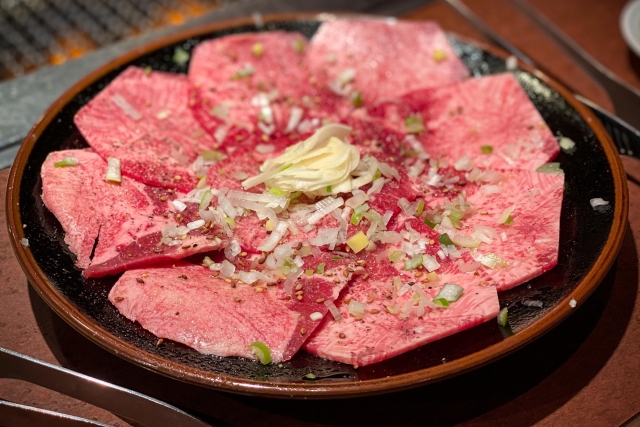
Beef tongue used in yakiniku is sliced into thin or thick slices and seasoned with salt or sauce.
The thinly sliced beef tongue is usually grilled quickly for a short period.
Thick slices, on the other hand, are grilled slowly on both sides and cooked thoroughly for a juicy, tender texture.
Beef tongue in yakiniku may be eaten as is or seasoned with lemon juice, salt, or a miso-based sauce.
Beef Tongue Stew
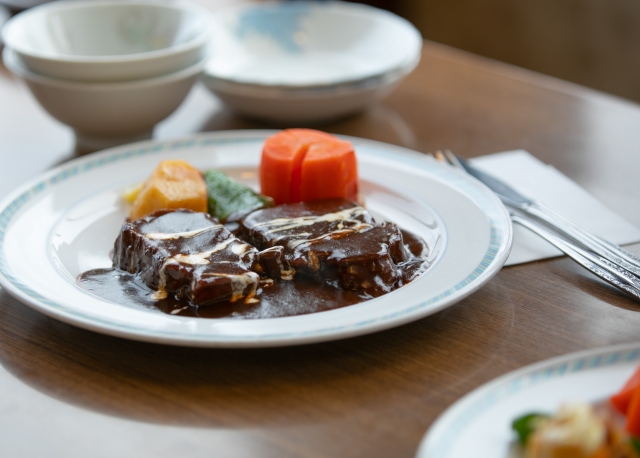
The stew is made by simmering beef tongue.
Slowly boiling the beef tongue results in tender meat, allowing the flavors to soak in.
Beef Tongue Steak
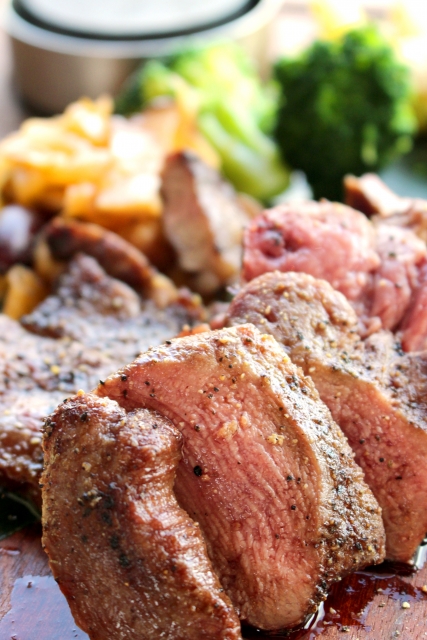
The meat is cut into steak-thick slices and grilled.
You can enjoy the crispy outside and juicy inside.
Cultural Background and History of Gyutan
Why Is Sendai Famous for Gyutan?
Sendai came to be known as the home of gyutan thanks to the ingenuity of a single chef in postwar Japan. In 1948, Keishiro Sano, the founder of the Western-style restaurant Tasuke in Sendai, began serving beef tongue—an ingredient that was rarely used at the time—seasoned simply with salt and grilled over charcoal. This salt-grilled gyutan quickly gained popularity and eventually spread as a local specialty of Sendai.
The savory aroma of gyutan, its distinctive texture, and its excellent pairing with barley rice, grated yam, and oxtail soup won the support of many diners. Today, Sendai is home to numerous gyutan specialty restaurants, and the dish is enjoyed not only by locals but also by visitors from across Japan and overseas.
Origins in Postwar Food Culture
The birth of gyutan cuisine is closely tied to postwar shortages and the effort to make effective use of parts of the animal that were previously discarded. In Japan at the time, beef tongue was not commonly eaten and was rarely considered a standard ingredient. However, during an era when meat supplies were limited, the idea of using every edible part of the animal led people to focus on beef tongue.
As yakiniku culture developed and offal and organ meats began to be appreciated, gyutan was also embraced as a “delicious and rare cut.” In particular, the Japanese style of grilling it over charcoal and seasoning it simply with salt became firmly established, giving rise to a unique gyutan food culture.
The Place of Gyutan in Japanese Food Culture
For modern Japanese diners, gyutan is firmly established as the dish many people want to eat first when enjoying yakiniku. At many yakiniku restaurants, ordering gyutan as the first plate is common, as its light flavor and pleasant texture stimulate the appetite.
In Sendai, gyutan set meals are also popular as a local gourmet attraction for tourists. This style typically includes gyutan served with barley rice, grated yam, and oxtail soup. While gyutan is not something most people eat frequently at home, it holds a strong presence as a “slightly special dish” enjoyed when dining out or traveling.
How to Describe and Refer to Gyutan in English
Useful English Expressions for Ordering from the Menu
For international visitors to Japan, understanding what gyutan is in English can help them order with confidence. The word “Gyutan” is a romanized version of the Japanese pronunciation and is commonly used in restaurants throughout Japan.
However, this alone may not clearly convey the meaning, so many menus add explanations such as “Grilled Beef Tongue.” “Set Meal” or “Teishoku” is translated as “Gyutan Set Meal,” referring to a combination of gyutan served with barley rice, grated yam, and soup. “Thick-cut Gyutan” indicates thickly sliced beef tongue, while “Salted Tongue” refers to gyutan seasoned with salt.
Gyutan-Related Terms Commonly Used at Yakiniku Restaurants
At Japanese yakiniku restaurants, various specific terms are used to describe gyutan. “Tan-shio” is the most standard menu item and refers to beef tongue seasoned simply with salt. “Jo-tan” indicates higher-quality gyutan made from a superior cut, known for its tenderness and rich flavor.
“Negi-shio tan” is gyutan topped with chopped green onions and a salt-based sauce, making it a particularly aromatic and popular dish. “Tan-moto” refers to the base of the tongue, which is especially tender, while “Tan-saki” refers to the tip of the tongue, which has a firmer texture.
By becoming familiar with these terms, diners can order more smoothly at yakiniku restaurants and enjoy gyutan on a deeper level.
How to make Gyutan
In this entry, we will introduce how to make Sendai Gyutan-Yaki (Sendai-style grilled beef tongue).
Please note that as the preparation of the dish varies greatly from restaurant to restaurant, the following will be provided as an example.
First, clean the tongue.
Carefully scrape off the white fascia (silverskin) from the surface.
Leaving the tissue can result in tough meat or an unpleasant texture.
Separate the root (thick part) and the tip (thin part) of the tongue, and slice the root part into slices about 1.5 to 2 cm thick.
Cut slits in the slices allows the flavors to soak in when seasoning the meat later.
Next, prepare the meat.
Place the tongue in a bowl of water to rinse off any blood from the surface.
Wipe off the water thoroughly.
Season the tongue.
Sprinkle salt evenly over the meat.
Sendai Gyutan-Yaki is characterized by its simple seasoning using salt only.
After sprinkling salt, allow a little time for the flavor to settle in.
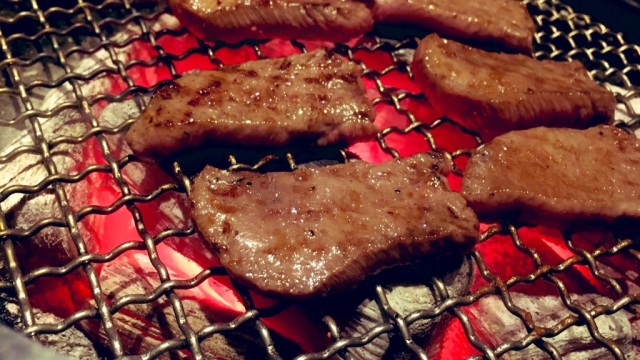
Grill the seasoned tongue.
Use charcoals or a gas fire for grilling.
For charcoal grilling, grill on both sides over high heat.
Once the surface has been browned, lower the heat and allow the meat to slowly cook through.
For gas grilling, grill over medium heat, turning several times until browned all over.
When cooked, give the finishing touches to the meat.
Cut the grilled tongue into bite-size pieces as necessary.
Finish with a splash of lemon juice or add some sauce or salt according to preference.
How to eat Gyutan
In this entry, we will introduce how to eat Sendai Gyutan-Yaki (Sendai-style grilled beef tongue).
Enjoy as is
Grilled gyutan seasoned simply with salt is quite delicious on its own.
Enjoy the juicy taste of the freshly grilled gyutan.
Sprinkle lemon juice over the meat
Squeeze lemon juice over the gyutan for a refreshing taste.
The acidity of the lemon enhances the flavor of the meat.
Use sauce, miso paste, or salt to season
Add some sauce, miso paste, or salt to adjust the flavor to your liking.
The miso paste served with this dish is usually called "nanban miso-zuke," and it is especially good for gyutan.
Enjoy with rice
The dish goes great with white rice.
The flavor of the meat and the sweetness of the rice are a perfect match.
Enjoy with sides
gyutan-yaki is often accompanied with gyutan stew, beef tail soup, chopped leek, or cabbage salad.
You can enjoy a variety of flavors by having it with these side dishes.
Tororo (grated yam, Chinese yam, or other kinds of potatoes) is also served with the dish.
Pour the tororo paste over your rice and enjoy it with a spoon.



